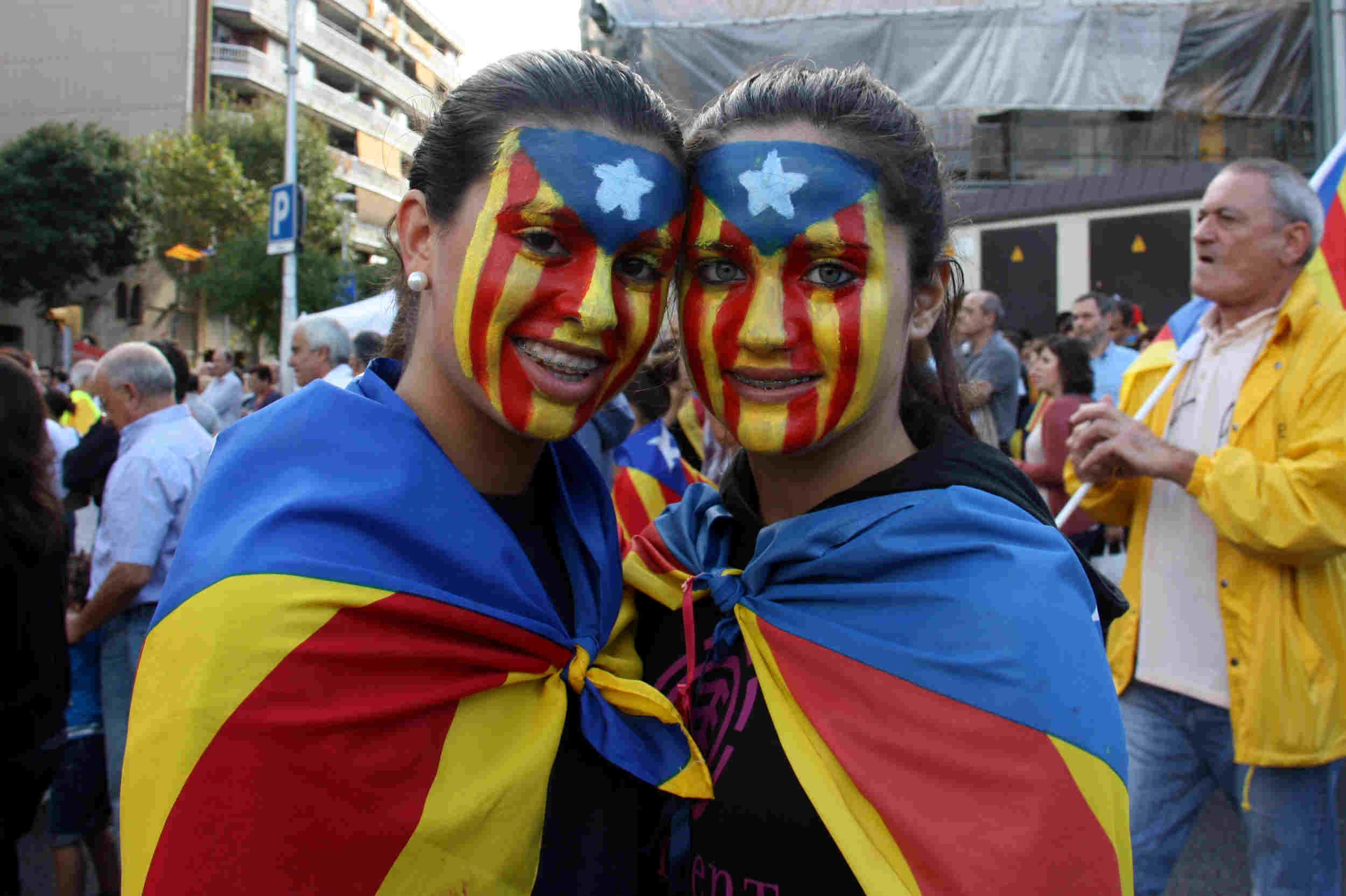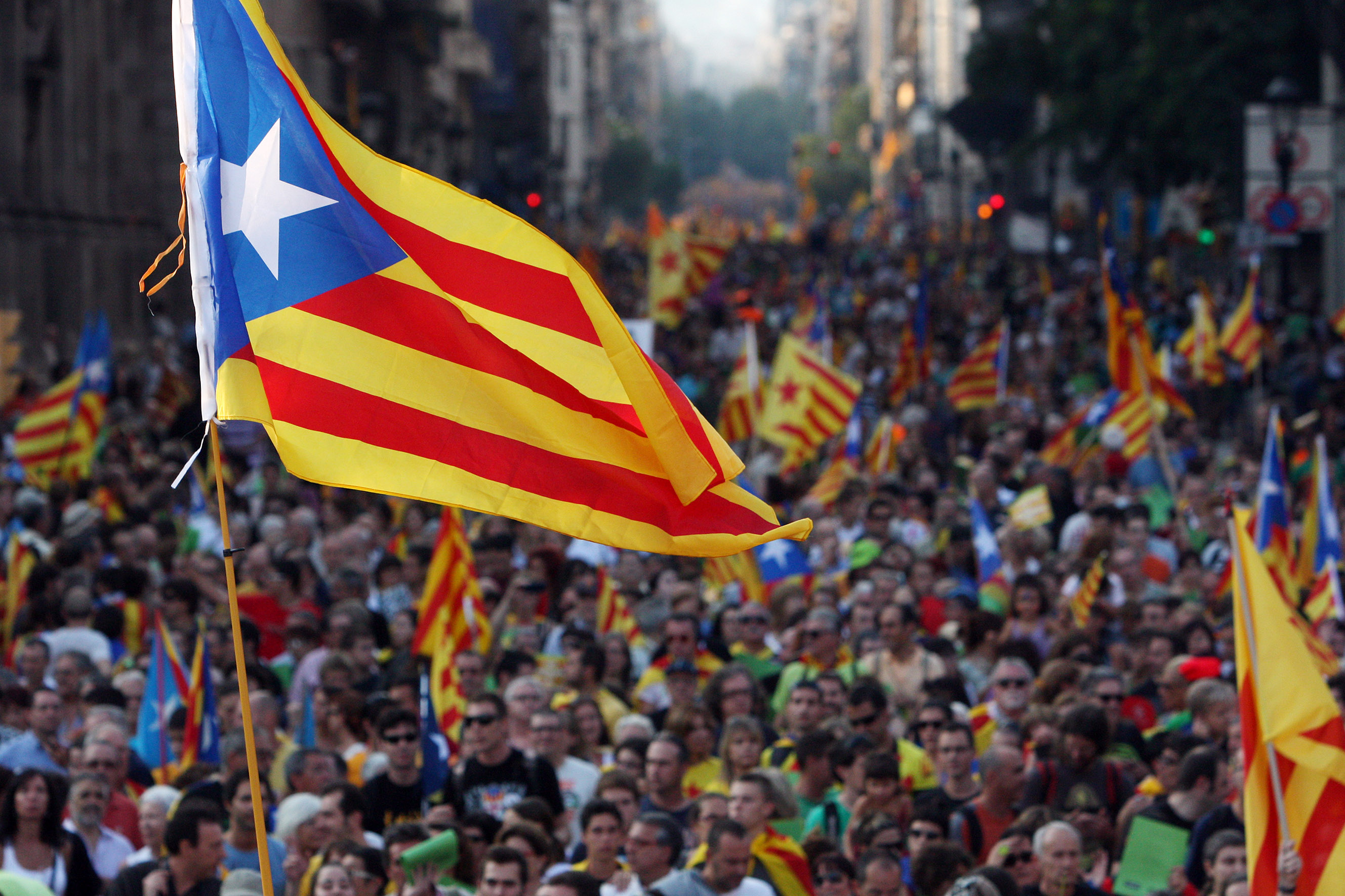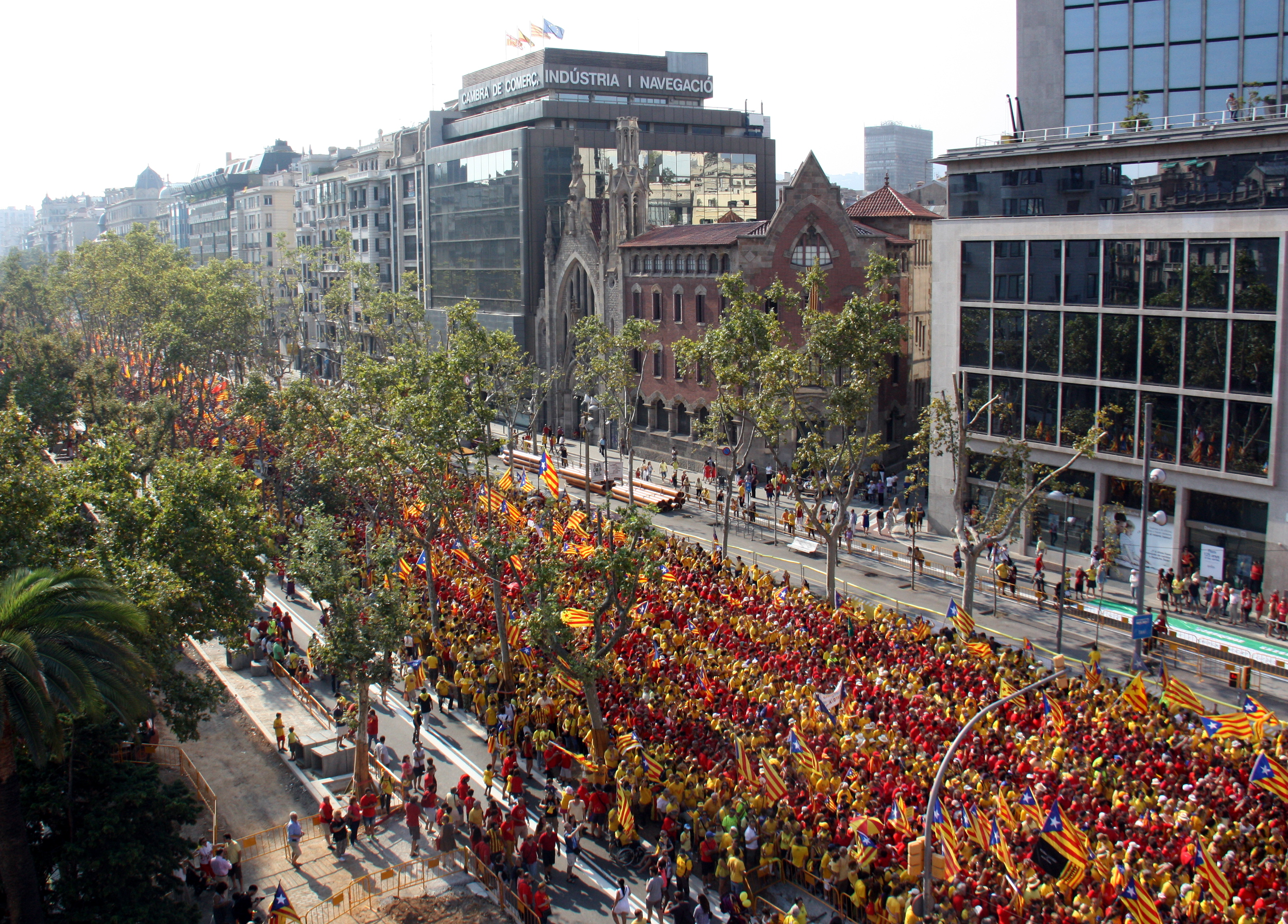This National Day rally will be nothing like before. This is where we've come from.
Ahead of September 11 protests amid Covid-19 concerns, we take a look at the last eight years of pro-independence demonstrations in Catalonia

September 11 commemorates the Diada Nacional de Catalunya (Catalonia’s National Day), marking the fall of Barcelona in the War of the Spanish Succession in 1714.
For the past eight years, the Catalan independence movement has turned this bank holiday into a stage for their annual show of force, organizing mass rallies that attracted up to 1.8 million people and pressured Catalan politicians into an unprecedented clash with Spain.
Yet 2020’s National Day will be nothing like its predecessors.
First and foremost, mass gatherings pose a great threat to a country battling the second wave of the coronavirus pandemic. Pro-independence groups are preparing a highly decentralized celebration with the aim of avoiding large crowds.
But this year’s political landscape is also unprecedented as it will be the first Diada since last year’s sentencing of the leaders behind the 2017 referendum push, not to mention pro-independence parties’ willingness to work together is hitting all-time lows.
Here’s a look at the past National Day celebrations and why they mattered.
2012: And so it begins
The first September 11 demonstration was called by the pro-independence Catalan National Assembly in 2012. Their motto and objective was simple: “Catalonia, new European state:”
There is some debate over how many people actually turned up in what would become a trend at future demonstrations. Organizers claimed they managed to assemble 2 million people in Barcelona, while the Spanish government delegation in Catalonia rebuked this, stating that there were only 600,000. Meanwhile, the Catalan government and local police found a middle ground with an estimate of 1.5 million people, perhaps a more reliable figure.
 The Catalan president at the time and leader of the now-defunct CiU party, Artur Mas, traveled to Madrid after the protests to demand a better financial deal for Catalonia from his Spanish counterpart, Mariano Rajoy. Rajoy rejected the request and Mas started advocating for Catalonia’s right to self-determination. This marked the beginning of eight years (and who knows how much longer) of talk of independence in Catalonia.
The Catalan president at the time and leader of the now-defunct CiU party, Artur Mas, traveled to Madrid after the protests to demand a better financial deal for Catalonia from his Spanish counterpart, Mariano Rajoy. Rajoy rejected the request and Mas started advocating for Catalonia’s right to self-determination. This marked the beginning of eight years (and who knows how much longer) of talk of independence in Catalonia.
2013: Citizens lock arms in 400km chain
The Catalan National Assembly and Òmnium Cultural organized a rally inspired by the events of 1989 in which people joined hands across Estonia, Latvia, and Lithuania to protest against the USSR.
Catalans stood similarly together, arm in arm, crossing Catalonia from north to south, with the Camp Nou even opening its doors so that the chain could pass through it. An estimated 1.6 million participated.
2014: Streets overflowing with a staggering 1.8 million people
Two months before the non-binding November 9 vote on independence, protesters made it pretty clear how they would be voting.
Protesters wore yellow and red t-shirts and formed a giant V with the colors of the Catalan flag through two of Barcelona’s major streets, Gran Via and Diagonal.
An estimated 1.8 million people participated that year in a figure that has not been surpassed since. The culmination of the protests was at 5.14pm, when out of the 1.8 million people present, one girl cast a vote in a ballot box placed at the point of the V. The time chosen represented the year 1714, when Catalonia was defeated by Spain in the Succession War and lost political independence.
 2015: Values of the future Catalan Republic
2015: Values of the future Catalan Republic
In 2015, the republic laid out plans for its future. Protesters, this year estimated at 1.4 million, carried pointed banners.
People were divided into ten variously colored sections, each representing a different value of the future Catalan republic including social justice, solidarity, culture, democracy, and sustainability.
2016: Protesters extend sphere of influence
Protesters this year spread across five different cities across Catalonia: Berga, Barcelona, Lleida, Salt, and Tarragona. Once again the divide represented different dimensions of Catalonia as an independent state. However, this year the number of protesters more than halved to 800,000.
2017: Run-up to the referendum
Less than three weeks before the October 1 referendum on independence, the September 11, 2017, protests were known as the ‘Diada del Sí’ (‘National Day of Yes’), given what protesters hoped the outcome of the referendum would be.
Protesters were brought on buses from all around the country wearing yellow shirts for independence and held a minute of silence in memory of the victims of the Barcelona and Cambrils terrorist attacks in August of that same year.
This year protesters created a giant ‘plus’ sign in a demonstration at the intersection of major roads. Large pro-independence banners were also passed along over the crowds. Crowds for this year were estimated to be at around 1 million.
2018: A fight to free political leaders
Protesters gathered to demand the release of jailed political leaders who were charged for calling a referendum and trying to split from Spain in 2017.
The number of protesters was comparable to the previous year, estimated at around 1 million.

In 2018, protesters donned t-shirts bearing the slogan: ‘We’re making the Catalan republic.’
Much like in 2014, at 5.14pm an act of symbolism was carried out, once again representing the fall of Catalonia in 1714. Total silence fell, followed by a wave of sound from one end of Diagonal to the other where a wall was toppled, representing the direct rule imposed by Madrid following the independence referendum.
2019: Lowest turnout ahead of long-awaited verdict
With 600,000 attendees, according to Barcelona’s local police, last year’s rally saw the lowest turnout for a National Day demonstration since the independence movement went mainstream in 2012. Still, protesters managed to flood Barcelona’s Plaça Espanya and the Gran Via avenue.
A month later, the sentencing of 9 independence leaders convicted of sedition for organizing the 2017 independence push unleashed a wave of protests that looked nothing like the National Day rallies, with hundreds injured following a week of altercations in Barcelona and other cities.
2020: Protesting despite Covid-19
The Catalan National Assembly has proposed holding a de-centralized Diada with events all across Catalonia, as well as abroad, in an effort to prevent the spread of Covid-19.
Under the motto "The duty to build a better future, the right to be independent," these de-centralized protests are set to be complemented by online activities striving to create "a great virtual network" as well as Covid-19 fundraisers.